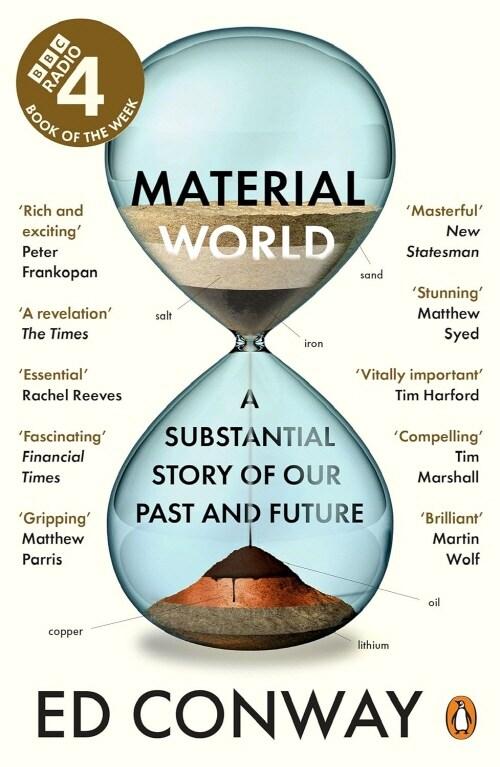책 이미지

책 정보
· 분류 : 외국도서 > 경제경영 > 전략기획
· ISBN : 9781118608562
· 쪽수 : 320쪽
· 출판일 : 2013-09-30
목차
Preface xiii
Acknowledgements xv
Introduction 1
What is “culture”? 4
The water that we couldn’t see when analyzing culture 6
The long-term view: corporate lifecycles and corporate culture 9
The innovation phase 10
The geographic expansion 10
Product-line expansion 11
Efficiency and scale focus 11
Consolidation 12
Interruptions of the lifecycle – when the crisis hit 13
“Global” companies 15
Summary 17
A brief chapter overview 19
Part I Developing the Cultural Dynamic Model® 23
1 Corporate Culture, Strategy and Business Results 25
What is corporate culture? 26
The three levels of culture 26
How leaders embed their values, beliefs and assumptions early on 28
Reinforced by the daily work practices in the mature organization 28
The six dimensions of corporate culture 29
Corporate culture and strategy: the cultural dynamic model® 30
Results come from work that gets done: “the work practices” 31
Work practices infl uenced by . . . 31
The water people don’t see: the national influencers 41
The three levels of culture 44
The time lag of culture and cultural agility as a competitive advantage 45
Chapter summary 47
2 The Lewis Model – Setting the Scene 49
Linear-active cultures 57
Multi-active cultures 58
Reactive cultures 60
Getting things done 64
3 Nation-State Traits and how they affect Corporate Cultures in Seven Countries 69
The United States 70
Key nation-state traits 70
Historical background 70
Expression of nation-state traits within corporate culture 71
Potential advantages/disadvantages of US nation-state traits 73
Summary 76
Sweden 77
Key nation-state traits 77
Historical background 77
Expression of nation-state traits within corporate culture 78
Potential advantages/disadvantages of Swedish national traits 79
Summary 80
France 80
Key nation-state traits 80
Historical background 81
Expression of nation-state traits within corporate culture 81
Potential advantages/disadvantages of French national traits 82
Summary 83
Japan 84
Key nation-state traits 84
Historical background 84
Expression of nation-state traits within corporate culture 85
Potential advantages/disadvantages of Japanese national traits 86
Summary 90
Italy 90
Key nation-state traits 90
Historical background 90
Expression of nation-state traits within corporate culture 91
Potential advantages/disadvantages of Italian national traits 94
Summary 94
Germany 95
Key nation-state traits 95
Historical background 95
Expression of nation-state traits within corporate culture 95
Potential advantages/disadvantages of German national traits 96
Summary 98
Great Britain 98
Key nation-state traits 98
Historical background 98
Expression of nation-state traits within corporate culture 99
Potential advantages/disadvantages of British national traits 100
Summary 102
4 The Cultural Dynamic Model® and the Austin Motors Case 105
Introduction 105
The static cultural dynamic model® – bringing it all together 106
The embedded values and beliefs from the business realities and the national culture 106
Work practices 108
Organizational structure and hierarchy (formal and informal) 108
Decision-making processes 110
Organizational skills and capabilities 110
Workflow processes 112
The performance management, reward and compensation systems 112
Work practice across borders 113
Decoding observed behaviours and vision statements 114
Mission and vision statements 116
Identifying the values, assumptions and beliefs underpinning the “cultural universe” 117
A cultural dynamic and the full cultural dynamic model® 119
Case study: Austin Motors 121
A brief 70-year history of Austin Motors 121
The work practices 126
Artefacts, rituals and communicated values 127
Observed behaviour at Austin 128
The results 128
One enabling cultural dynamic – “the bias-for-action” 129
The potentially derailing short-term wing-it cultural dynamic 130
Conclusion 131
Chapter closing 132
Part II Cases: The Lifecycle of a Company from Innovation to Consolidation 133
5 The Embryonic Period 135
Values embedded during the early years: Apple, Microsoft and Dell 136
Apple 136
Microsoft 137
Dell 138
Traits that enable success over the business cycles 140
The embryonic period 141
Case study: Nokia 144
The Finnish culture 144
The embryonic period of the new Nokia 1.0 145
The work practices at Nokia 1.0 147
Nokia 2.0 149
Nokia 3.0 152
Case study: KONE – agility and humility 154
Case study: Walmart – an American business tackling foreign markets 155
Walmart in China 158
Walmart in South Korea 159
Walmart cultural adjustments 159
Chapter close – preview the growth period 160
6 The Growth Period 161
The product line expansion stage 162
Description of this phase 162
National traits that tend to enable or derail during the innovation phase 164
The scale and efficiency phase 164
National traits that tend to enable or derail during the scale and efficiency phase 165
Case study: Sony versus Samsung Electronics 166
Sony 166
Samsung Electronics 172
Conclusion on Sony versus Samsung Electronics 180
Chapter close 184
7 The Maturity Period 185
The consolidation phase 187
Description of the consolidation phase 187
National traits that tend to enable or derail during the maturity period 188
Case study: Toyota 190
The founder and Toyota’s embedded corporate values 191
The Toyota Way and work practices at Toyota 191
The Toyota Way as a source of sustainable differentiation 193
Toyota in America 195
The crisis and conclusion 197
Case study: FLSmidth 198
The Danish national culture 199
A brief history and the values the founder embedded 200
The next 70 years – disaster strikes – and a new strategy is outlined 201
A new footprint challenges the culture and the work practices 202
The “small country” dilemma facing FLSmidth as it moves from 1.0 to 2.0 203
The three cultural strategies options facing FLSmidth 203
Epilogue on FLSmidth 205
Case study: P&G 205
A brief history of P&G 206
A few central embedded values 206
Key lessons from the eight cases 210
Part III The Model in Action (Lessons for Boards, Managers and Investors) 213
8 Whither the West 215
Whither the West 215
Appearance and reality 218
Golden rules for dealing with reactive cultures 220
1. Speech is to promote harmony 220
2. Good listening is important 220
3. Never interrupt 221
4. Never confront 221
5. Never disagree openly 221
6. Never cause anyone to lose face 222
7. Suggestions, especially criticism, must be indirect 223
8. Be ambiguous, so as to leave options open 223
9. Prioritize diplomacy over truth 224
10. Follow the rules but interpret them flexibly 224
11. Utilize networks 225
12. Don’t rush or pressure Asians. Do things at appropriate times 225
13. Observe fixed power distances and hierarchy 227
14. Work hard at building trust 228
Golden rules for dealing with multi-active cultures 228
1. Speech is for opinions 233
2. Let them talk at length and then reply fully 233
3. Be prepared to discuss several things at once 234
4. Be prepared for several people talking at once 234
5. Display feelings and emotion 235
6. Interrupt when you like 235
7. Truth is flexible and situational 235
8. Be diplomatic rather than direct 236
9. Socialize enthusiastically, be gregarious 236
10. Think aloud 236
11. Complete human transactions 237
12. Seek and give favours with key people 237
13. Overt body language and tactility are acceptable 238
14. Reputation is as important as profit 238
15. Accept unpunctuality 238
16. Remain relationship oriented 238
9 The Crisis 241
Strategy v. competition: being “outplayed” 243
The Prussian Army and Field Marshall Von Moltke 243
The effect of national traits 246
Problems in execution 247
Examples – Sony and GM 247
The effect of national traits on poor execution 247
Disruption 248
Technology disruption 248
The effect of national traits on technology disruption 250
Process disruption 250
The effect of national traits on process disruption 251
Success – the success crisis 251
Success makes blind – the success trap 252
Success has no memory 252
The share price trap 253
The burning platform 254
Time – if you don’t move forwards you move backwards 255
Change of leadership 256
Navigating a transformation point 256
Differing cultural performances in times of crisis 257
Poor strategy facing competition 257
Poor execution 258
Disruption 259
Success 259
Time 260
Change of leadership 260
Navigating transformation 261
Meeting crises 262
Chapter closing 263
10 Enhancing Corporate Performance in a Multicultural World 265
Seeing the water that surrounds you 266
The national lifecycle fingerprint 266
Examples of 17 national traits that both enable and derail 269
Two recommendations to investors 269
1. Watch out for the tell-tale signs of a derailing cultural dynamic and promote diversity in the board 269
2. Analyze the cultural implications carefully when merging two organizations 271
Two recommendations to boards 272
1. Conduct a full strategy and cultural dynamics audit at least every five years 272
2. Promote diversity at the board and in the executive team 273
Four recommendations to management 273
1. Carefully balance diversity with day-to-day performance and make the organization culturally aware 273
2. Establish a recurrent methodology for making culture discussion more data driven and establish a cross-functional task force to systematically monitor culture 274
3. Ensure there is a clear strategy for embedding key elements of the corporate culture globally 275
4. Align the talent and leadership agenda with the cultural imperatives 276
Implications for countries 277
Chapter and book conclusion 278
Appendix 281
References and Websites 287
Index 289































